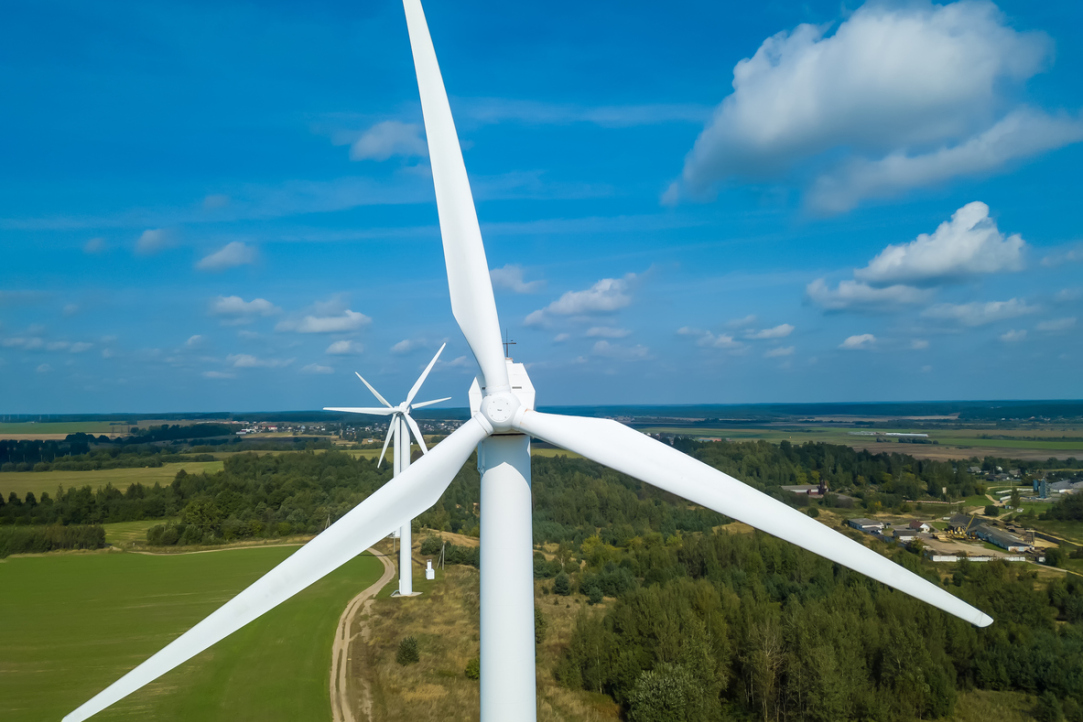Green Energy Patents Boost Company Profitability

For nuclear energy, the increase can be up to 1.6%
An ESG strategy—Environmental, Social, and Corporate Governance—not only helps preserve the environment but can also generate tangible income. Thus, the use of renewable energy sources (RES) and green technologies in the energy sector enhances return on investment and profitability. In contrast, higher CO2 emissions result in lower financial performance. This has been demonstrated in a collaborative study by the HSE Faculty of Economic Sciences and the European University at St. Petersburg. Their findings have been published in Frontiers in Environmental Science.
In recent years, green energy technologies have made significant advancements. Governments and businesses invest hundreds of billions of dollars in developing renewable energy sources (RES), nuclear energy, and electric transportation. In 2020, their share accounted for 40% of all investments in the energy sector, totalling $400 billion. In the European Union, spending on green energy is 3.5 times higher than on traditional energy. Meanwhile, China has reduced investments in the gas and oil sectors by 40% to focus on developing RES. Increasingly, research demonstrates that adopting green technologies can have a positive impact on company profitability.
Elena Makeeva, Associate Professor at the HSE Faculty of Economics, Konstantin Popov, Research Assistant at the HSE Corporate Finance Centre, and Olga Teplova, Research Fellow at the European University at St. Petersburg, have investigated how investments in green energy impact the profitability of energy companies in the BRICS countries. The researchers studied 63 largest firms in the BRICS countries and examined their key financial performance indicators, including return on assets (ROA), return on invested capital (ROIC), and market capitalisation.
CO2 emissions and patents related to three primary types of green energy—renewable energy technologies, combustion technologies with mitigation potential, and nuclear energy technologies—were considered as independent variables. China leads among BRICS member countries in all types of patents, with its share reaching 94% for patents in the field of renewable energy and 89% for patents related to hybrid energy systems.

The model also incorporated the company's revenue and investments, along with the per capita GDP of the company's home country, as controls. The authors constructed several models to establish a connection between investments in green technologies, carbon dioxide emissions, and the return on assets and investments, and market capitalisation of companies.
They have found that higher CO2 emissions significantly reduce company profitability and negatively affect market capitalisation: a 1% increase in carbon dioxide emissions results in nearly a 2% decrease in company profitability. The return on investment decreases even further, by 5% to 7%, along with a decrease in market capitalisation. Conversely, the more 'green energy' patents a company registers, the greater its profitability. The return on assets increases by 0.7% on average, and patents in the field of nuclear energy result in the largest increase of up to 1.6%. The return on investment has been found to increase by 2% to 3%. The researchers note that patents for renewable energy technologies contribute significantly only to ROIC, whereas combustion technologies with mitigation potential and nuclear technologies positively influence all financial performance indicators of companies. The authors also advocate for further advancements in nuclear power technology, since a nuclear power plant is a powerful, stable, and low carbon energy source with a long operational lifespan.
However, it should be noted that investments in green energy typically involve long-term commitments and do not yield immediate financial returns. This study demonstrates that businesses prioritising social and environmental responsibility in their operations can eventually achieve significant profits.

Associate Professor, Faculty of Economics, HSE University
The development of green energy should be a priority for BRICS countries, and investing in infrastructure and improving legislation are crucial factors for an expansion of low-carbon technologies in the electric power industry.
See also:
Scientists Discover Why Parents May Favour One Child Over Another
An international team that included Prof. Marina Butovskaya from HSE University studied how willing parents are to care for a child depending on the child’s resemblance to them. The researchers found that similarity to the mother or father affects the level of care provided by parents and grandparents differently. Moreover, this relationship varies across Russia, Brazil, and the United States, reflecting deep cultural differences in family structures in these countries. The study's findings have been published in Social Evolution & History.
When a Virus Steps on a Mine: Ancient Mechanism of Infected Cell Self-Destruction Discovered
When a virus enters a cell, it disrupts the cell’s normal functions. It was previously believed that the cell's protective response to the virus triggered cellular self-destruction. However, a study involving bioinformatics researchers at HSE University has revealed a different mechanism: the cell does not react to the virus itself but to its own transcripts, which become abnormally long. The study has been published in Nature.
Researchers Identify Link between Bilingualism and Cognitive Efficiency
An international team of researchers, including scholars from HSE University, has discovered that knowledge of a foreign language can improve memory performance and increase automaticity when solving complex tasks. The higher a person’s language proficiency, the stronger the effect. The results have been published in the journal Brain and Cognition.
Artificial Intelligence Transforms Employment in Russian Companies
Russian enterprises rank among the world’s top ten leaders in AI adoption. In 2023, nearly one-third of domestic companies reported using artificial intelligence. According to a new study by Larisa Smirnykh, Professor at the HSE Faculty of Economic Sciences, the impact of digitalisation on employment is uneven: while the introduction of AI in small and large enterprises led to a reduction in the number of employees, in medium-sized companies, on the contrary, it contributed to job growth. The article has been published in Voprosy Ekonomiki.
Lost Signal: How Solar Activity Silenced Earth's Radiation
Researchers from HSE University and the Space Research Institute of the Russian Academy of Sciences analysed seven years of data from the ERG (Arase) satellite and, for the first time, provided a detailed description of a new type of radio emission from near-Earth space—the hectometric continuum, first discovered in 2017. The researchers found that this radiation appears a few hours after sunset and disappears one to three hours after sunrise. It was most frequently observed during the summer months and less often in spring and autumn. However, by mid-2022, when the Sun entered a phase of increased activity, the radiation had completely vanished—though the scientists believe the signal may reappear in the future. The study has been published in the Journal of Geophysical Research: Space Physics.
Banking Crises Drive Biodiversity Loss
Economists from HSE University, MGIMO University, and Bocconi University have found that financial crises have a significant negative impact on biodiversity and the environment. This relationship appears to be bi-directional: as global biodiversity declines, the likelihood of new crises increases. The study examines the status of populations encompassing thousands of species worldwide over the past 50 years. The article has been published in Economics Letters, an international journal.
Scientists Discover That the Brain Responds to Others’ Actions as if They Were Its Own
When we watch someone move their finger, our brain doesn’t remain passive. Research conducted by scientists from HSE University and Lausanne University Hospital shows that observing movement activates the motor cortex as if we were performing the action ourselves—while simultaneously ‘silencing’ unnecessary muscles. The findings were published in Scientific Reports.
Russian Scientists Investigate Age-Related Differences in Brain Damage Volume Following Childhood Stroke
A team of Russian scientists and clinicians, including Sofya Kulikova from HSE University in Perm, compared the extent and characteristics of brain damage in children who experienced a stroke either within the first four weeks of life or before the age of two. The researchers found that the younger the child, the more extensive the brain damage—particularly in the frontal and parietal lobes, which are responsible for movement, language, and thinking. The study, published in Neuroscience and Behavioral Physiology, provides insights into how age can influence the nature and extent of brain lesions and lays the groundwork for developing personalised rehabilitation programmes for children who experience a stroke early in life.
Scientists Test Asymmetry Between Matter and Antimatter
An international team, including scientists from HSE University, has collected and analysed data from dozens of experiments on charm mixing—the process in which an unstable charm meson oscillates between its particle and antiparticle states. These oscillations were observed only four times per thousand decays, fully consistent with the predictions of the Standard Model. This indicates that no signs of new physics have yet been detected in these processes, and if unknown particles do exist, they are likely too heavy to be observed with current equipment. The paper has been published in Physical Review D.
HSE Scientists Reveal What Drives Public Trust in Science
Researchers at HSE ISSEK have analysed the level of trust in scientific knowledge in Russian society and the factors shaping attitudes and perceptions. It was found that trust in science depends more on everyday experience, social expectations, and the perceived promises of science than on objective knowledge. The article has been published in Universe of Russia.


